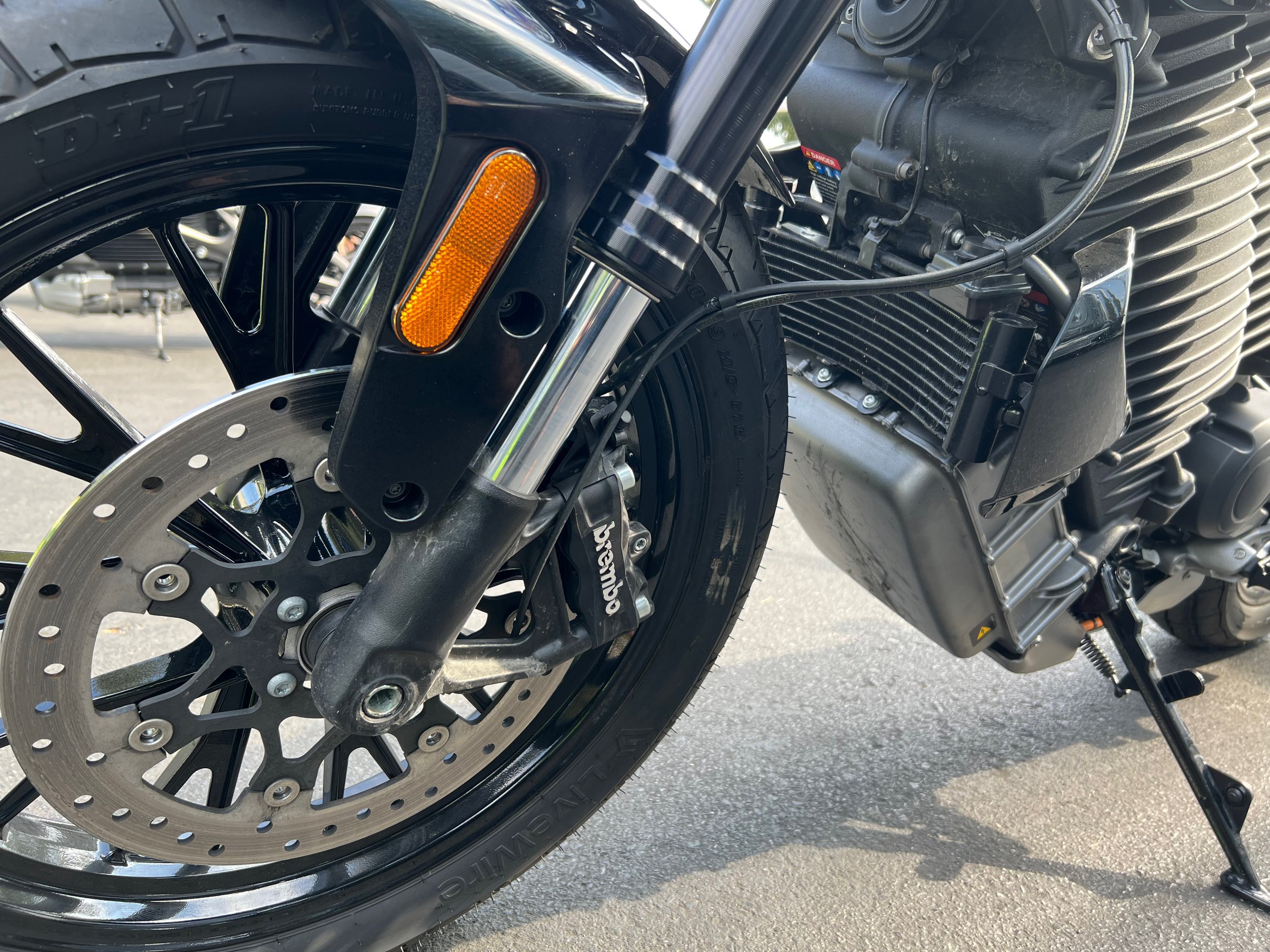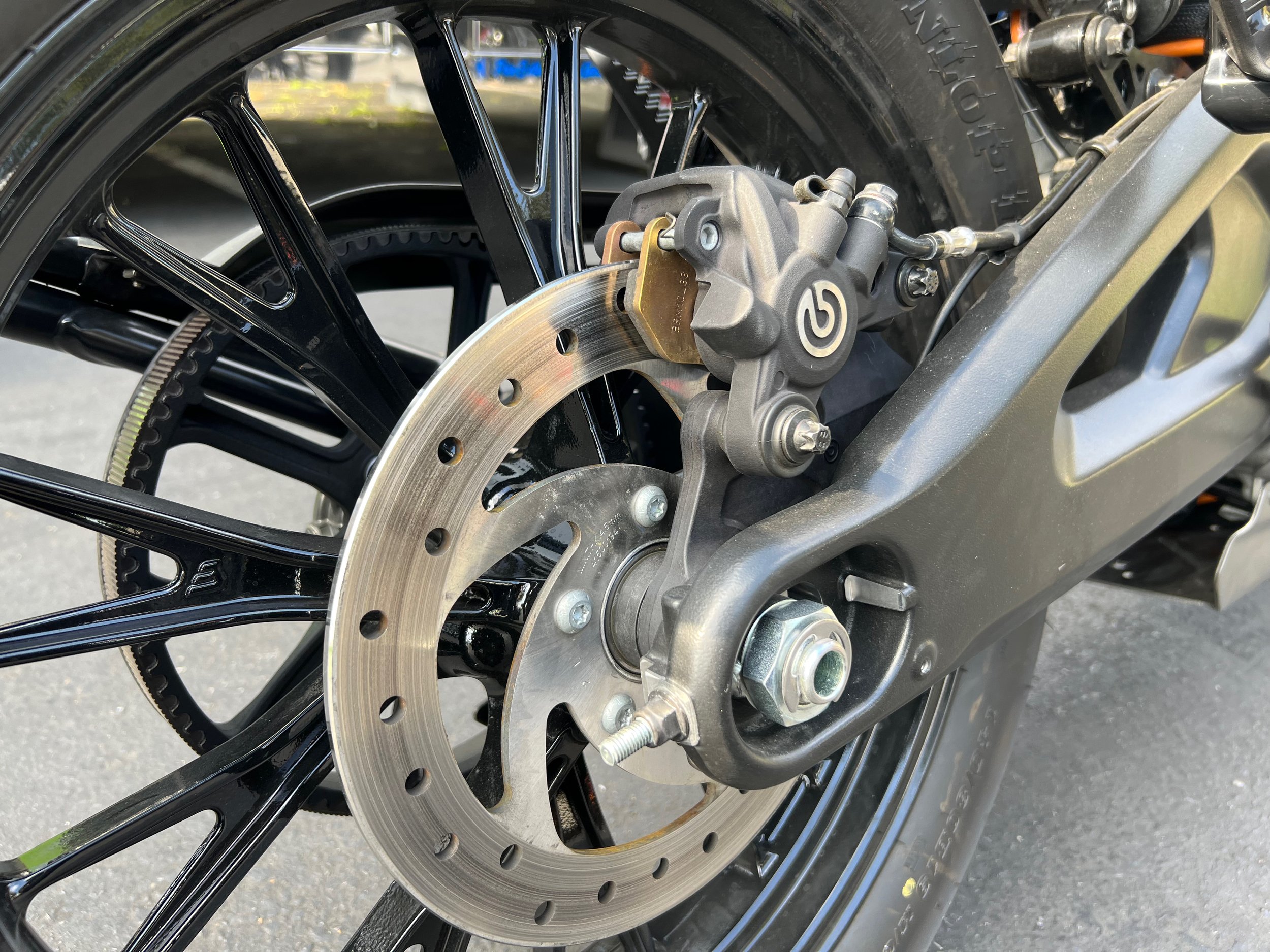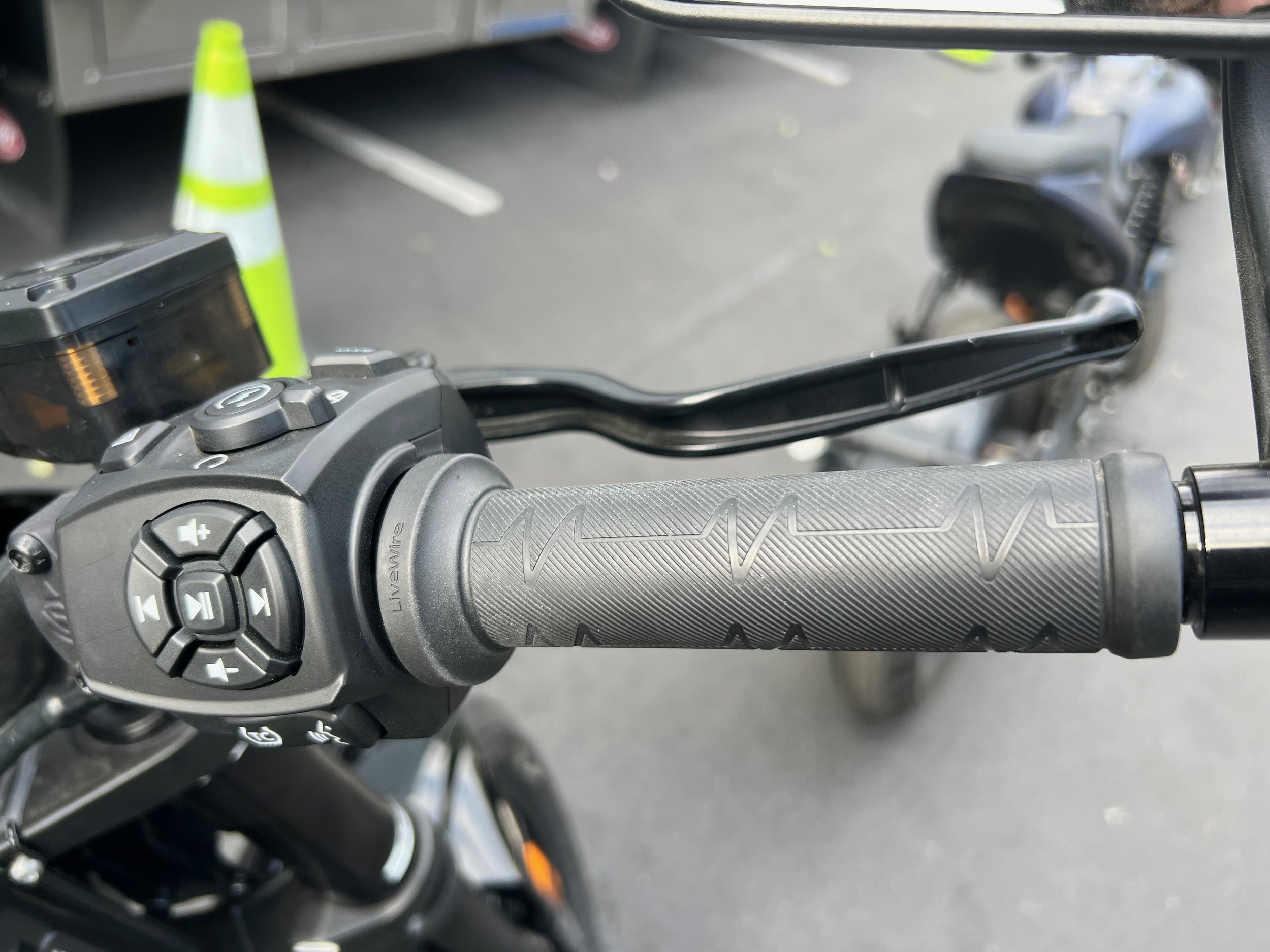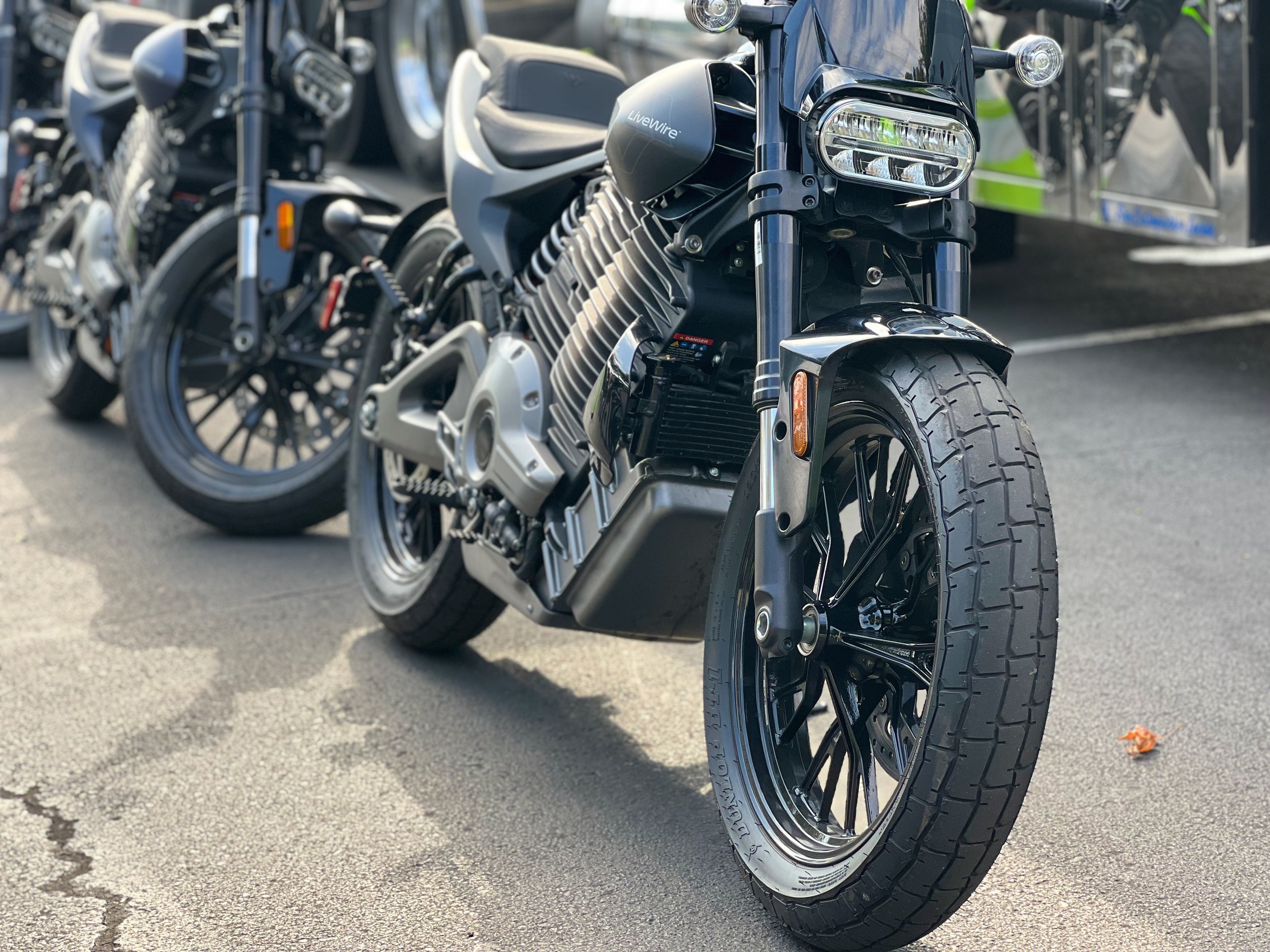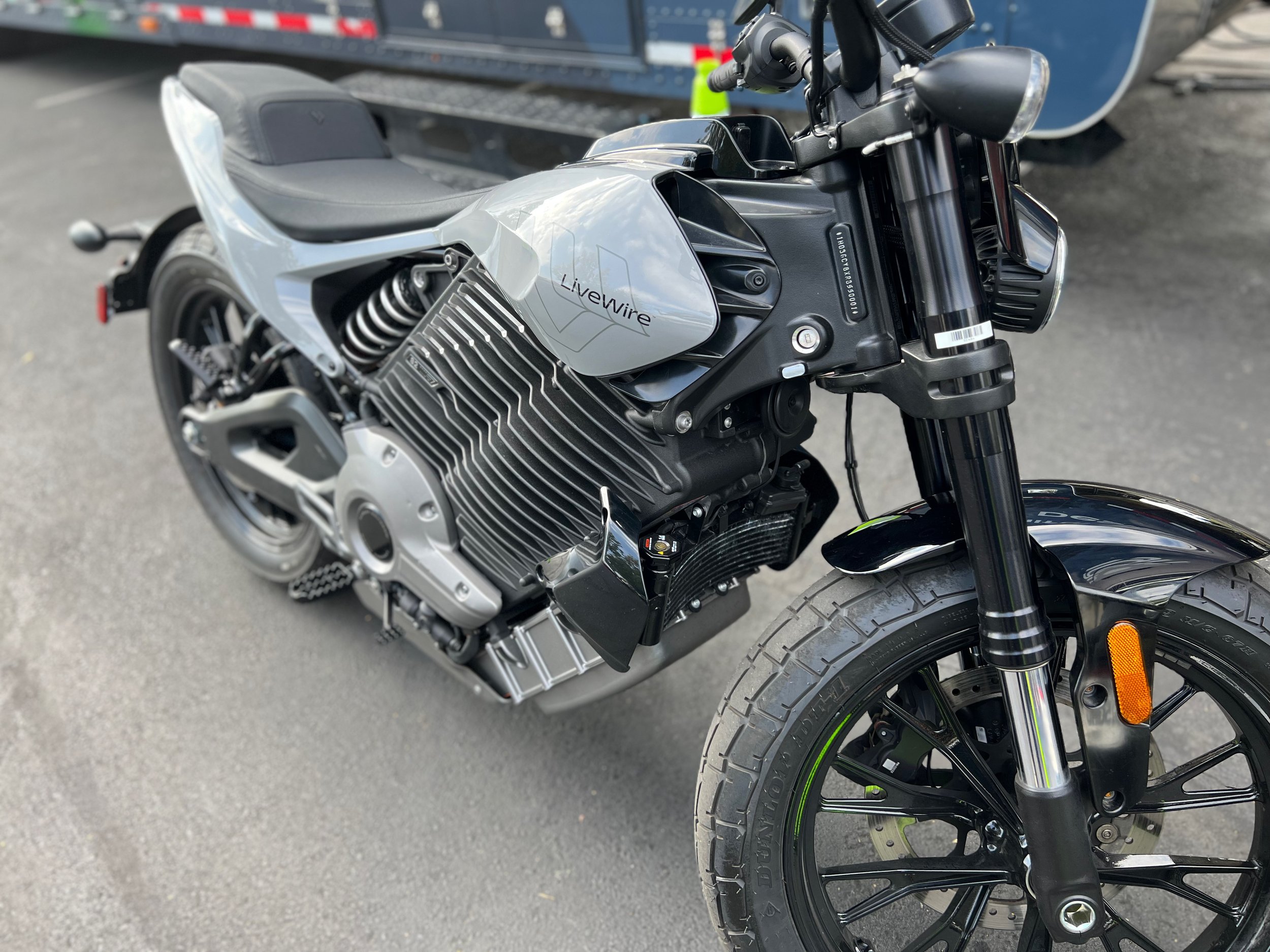Livewire S2 Del Mar Demo Ride
While the demo ride was almost comically brief, there were some obvious takeaways from riding the Livewire S2 Del Mar. Ride along with me as I take my first journey in the latest offering from Livewire.
Motivation
Firstly, the torque is absolutely amazing, bordering on absurd. You can curb this with either Rain or Eco modes, but what’s the fun in that? As with all electrics, 100% of it is available at any speed and 100% of 194 ft-lb of torque is one helluva lot. On the ride, I would get a gap ahead of me and by the time I reached max throttle opening I had to brake. Speaking of which, while I could not fully test the hydraulic braking abilities, the hardware certainly seems to be decently spec’d with a single Brembo two piston caliper up front and a single Brembo in back, similar to what you would see on a Triumph Speed Twin 900. Regenerative braking is at its greatest in Eco mode, though I never rode in that setting. I had the bike in either Road or Sport modes which have the least regen, yet when riding at a casual pace was still sufficient enough that I didn’t need to touch the brakes. What I would most prefer are settings that use as much as the bike has to offer and more closely resembles an internal combustion bike, which is both a high level of acceleration and a lot of regen. Fortunately that is something you can customize via the Livewire app. Any level and combination of power delivery and regen can be yours.
What all those buttons on the controls do, I can’t say. It’s a mind-boggling array of nearly identical buttons. To make matters worse, they are all the exact same height. The result is a complete inability to decipher which buttons do what without visual confirmation. As part of my design schooling, we read the book “The Design of Everyday Things” by Donald Norman, a critique of the design errors that surround our everyday lives.. I don’t think the Livewire designers went to my school. For the love of all things manmade, can we make this compulsory reading?
Hitting the Design Mark
To be fair, in all other respects the bike is very good looking to my eyes, which is not something I can say for the overwhelming majority of electrics. The designers were able to translate the dirt track aesthetic very successfully. The bike is rather narrow and compact and features authentically sized 19” wheels. You sit far forward and upright on the bike. All proper dirt tracker qualities. It’s not even particularly heavy, tipping the scales at 436 pounds which is less than either of Triumph’s Speed Twins and considerably less than the 489 pounds of a more direct competitor like the Zero SR.
While our demo route was incredibly conservative, the bike felt willing to tip into the turns. With my weight so far forward on the bike, it felt more natural to use a dirt bike body position. Keeping my body upright on top of the bike and pushing it down, inside foot dangling felt entirely appropriate. Although my dirt experience is not extensive, it did bring back great memories of attending the Rich Oliver Mystery School. Although I don’t recommend wearing a steel boot around town, I would feel completely comfortable railing the Del Mar around tight corners. Long rides might be a different matter altogether. The seat is very long with a substantial taper to it. Where I was sitting on my ride was toward the front. The padding was thin, but not terribly uncomfortable. The padding felt like it may be memory foam. My initial reaction was that it would not be comfortable for hours on end, but then you really can’t ride this bike that long before running out of juice, so what does it matter? For the fifteen minutes I was onboard it was great.
The suspension isn’t some basic, generic set up. While it was likely set up for someone in excess of my 175 lbs, there is plenty of adjustability to dial in your ideal setup. Up front, the Showa Fully Adjustable 43mm inverted front forks feature rebound settings on the left and compression on the right. Out back, a Showa Free Piston Monoshock rear shock is fully adjustable.
The seat both thickens and widens toward the rear, with a small section for the pillion.
Where does it Fit?
The S2 Del Mar has no fairings, so it’s clearly no touring bike. It has 113 miles of city range, so It’s no cruiser. Requiring 78 minutes to charge, it is not particularly practical. What this bike is, at its very core, is a straight up hooligan. It can be made downright docile, but its main prime directive is to party. I often criticize electrics for being heavy, ruthlessly efficient appliances. They lack the immersion that ICE bikes offer. While the Del Mar does possess some of those traits, specifically the whine of the motor, it is substantially more fun than its electric competitors. It’s happy to trade off range for the glorious combination of good looks, ludicrous torque, and at just 436 pounds, light weight. It doesn’t do everything, but what it does, it does well. In its element, it is an absolute joy.
If you already have a bike that can eat up the miles and you’re looking for a second one to terrorize the ‘burbs, be sure to check out the Del Mar.
It’s an interesting contrast to the Livewire One, the first model, as the name would suggest, from the brand. Hands down, the Del Mar is the more enjoyable bike to ride. Sound is not the forte of any electric, but the scream emanating from the One’s motor even at steady state cruising is intolerable. I could not wait to come to a stop just so my ears could catch a break. The Del Mar’s motor note is similar bet nowhere near the volume of its brother and really only slightly noticeable when you are accelerating hard. The One’s riding position is more aggressive and cramped compared to the relaxed and upright riding posture the Del Mar provides. Then there is the silliest feature I have seen—or rather felt—yet. The One features a so-called “heartbeat” which seems to be an attempt to provide a subtle V twin-like vibration to the bike. No thanks. Thankfully that gimmick is not present on the Del Mar.
To further highlight what a niche motorcycle this truly is, let’s compare it to a couple of offerings from Zero Motorcycles. I have had the opportunity to demo several models from Zero over the years, including the S, SR/S, and DSR/X. Zero has a considerable range of bikes these days with five they consider street and another four they consider dual sports. Of these, the S seems like the Del Mar’s closest competitor in terms of proportions, though most of the specs are closer to the SR. Let’s take a look at all three.
Del Mar
$15,499
194 ft-lb
84 hp
10.5 kWh
103 mph
436 lb
62 miles (combined)
142 minutes 100% charge
Zero S
$12,995
78 ft-lb
48 hp
6.3 kWh
98 mph
313 lb
68 miles (combined)
312 minutes 100% charge (std)
Zero SR
$19,995
122 ft-lb
74 hp
13.7 kWh
104 mph
489 lb
128 miles (combined)
288 minutes 100% charge (std)
Here we can see how focused the Del Mar is on its narrow use case. While it splits the two Zero offerings, it puts the hurt on both of them with power while coming up short on range. Commendably, the Del Mar comes standard with an excellent charger, cutting charge times in half of the other bikes when equipped with their standard chargers.
Still, range and charge times remain the achilles heel of electric motorcycles. My own Triumph Speed Twin is a reasonable competitor for this style of bike so let’s make a few comparisons. At $14,000, it is right in the ballpark, cost-wise. While not lacking in torque by ICE standards, the Speed Twin 1200’s 83 ft-lb falls short of both the Del Mar and SR in this category, besting only the Zero S. Falling short is a bit of a euphemism compared to the Del Mar which absolutely annihilates my beloved bike in this department and even that is painting the Triumph in its best light. While the parallel twin’s torque curve is relatively flat, it only briefly makes that peak number—all electrics make their peak torque at all speeds. They have power on command, and gobs of it. Top speed is sufficient on all bikes in the real world as all have sufficiently extralegal abilities, but if you want bragging rights, the 135 mph figure of the Speed Twin bests all of these.
Now back to that pesky electric heel. In my admittedly non-eco conscious riding, I get 46 mpg and with its 3.8 gallon tank, that equates to 175 miles of range. The time required to refill its energy source is about two minutes. I don’t ride that far in one stretch—like all of the bikes above, it’s not a cruiser. But when I do stop it’s not often I do so for 78 minutes or more and I can refill at any of the 145,000 gas stations in the country.
None of this is to slight the Del Mar, this is simply the reality of electric motorcycles at this point in their development. I can see a great use case for electric vehicles when it comes to commuting. The Del Mar is not built for that. A lot of electric bikes try to be all things to all people, but in my experience no bike regardless of technology can accomplish that feat. Commendably, the Del Mar is remarkably focused. If you are staying relatively close to home, and let’s be honest, that’s where most motorcycles spend their entire lives, the Del Mar will rip up the pavement better than anything else on the market. If you already have a bike that can eat up the miles and you’re looking for a second one to terrorize the ‘burbs, be sure to check out the Del Mar.


